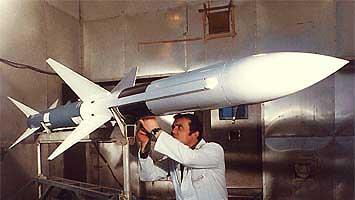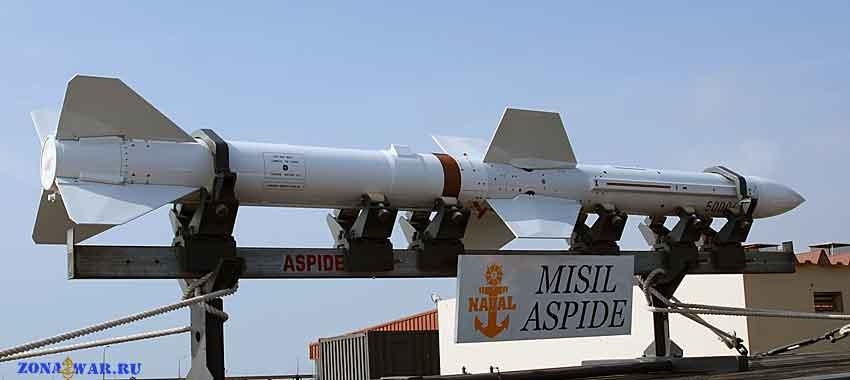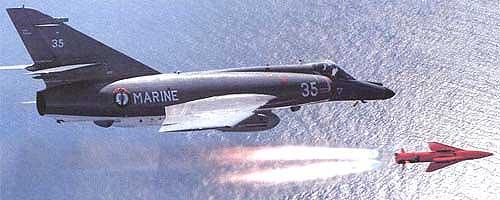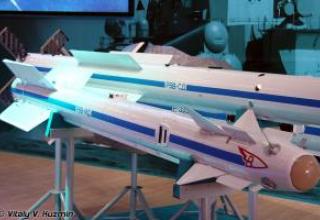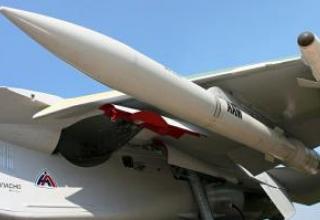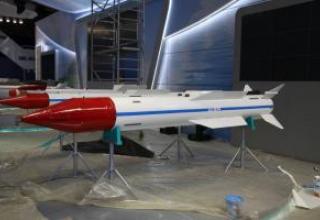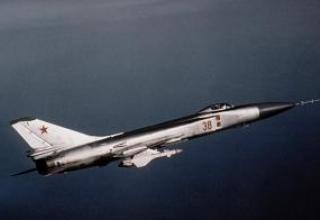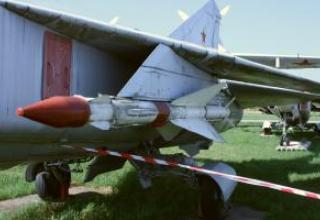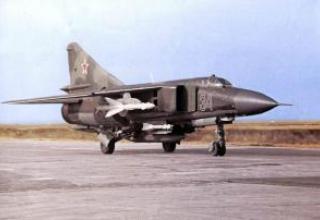In 1969, the command of the Italian Air Force signed a contract with the Selenia company for the development of medium-range missiles Aspide-1A based on the American missile AIM-7E Sparrow.
In the early stages of the work was carried out by the firm on a proactive basis, but in 1971 the Italian government began funding the program. The missile was ready for mass production in 1978, but due to financial complications, its production was carried out in small batches since the early 1980s.
Italian F-104S fighters were fitted with Aspide-1A missiles. The PL-11 medium-range missile was developed in China on the basis of this missile.
The Aspide-1A is used in the Spada anti-aircraft missile system and the Albatros ship's SAM system.
Further development of the Aspide-1A family of missiles took place as part of the Idra multi-purpose missile (Aspide-Mk2) development program.
Composition:
Solid fuel rocket Aspide-1A is made on the aerodynamic scheme "duck".
In comparison with the prototype Aspide-1A, it has almost twice as long range and increased noise immunity.
The missile consists of: a block of guidance, control and blast systems, combat unit, as well as the wing compartment and engine. Its design is similar to that of AIM-7E, except that its combat unit is located behind the guidance, control and blast systems, not between the wing compartment and the engine. This significantly reduced the amount of space occupied by the electronics unit and allowed the free space to be used for the combat unit. In turn, due to this location of the combat unit, it was possible to increase the size and power of the missile's engine.
The Aspide-1A guidance system is a semi-active radar monopulse homing head (SHH), which has better accuracy and interference immunity than the conical radar SHH installed on the AIM-7E missile. The new guidance system, according to the calculations of the company's specialists, makes it possible to apply the Aspide-1A to low-flying targets under the influence of signals reflected from the ground. The diameter of the homing head antenna is about 150 mm, operating frequency range is 8-10 GHz. During homing the proportional navigation method is used. The weight of the electronic units is reduced by using integrated circuits.
Shrapnel-type combat unit, in which a brilliant explosive substance is surrounded by a notched steel shell. When it is detonated, fragments of a given size are formed. The weight of the combat unit is 33 kg. The BC was developed by the Italian company SNIA Difesa e Spazio and is equipped with Doppler radar and contact fuses.
The wing compartment is equipped with a hydraulic steering wheel drive and an electric power supply unit. The drive unit is powered by a closed-type hydraulic system, which provides the rocket with greater maneuverability than the AIM-7E, which has an open-type hydraulic drive system (especially at the end of the flight path). The missile can maneuver with acceleration up to 30 g and is effectively used in close combat.
The rocket engine is solid propellant, single-stage. The weight of the fuel is about 55 kg, its burning time is no more than 3.5 seconds. Total thrust pulse is about 12000 kg s. The rocket's flight speed at the end of engine operation reaches M=2.
Characteristics:
| Start range maximum,km | 75 |
| Exceed target height, m | up to 8000 |
| Flight speed maximum, km/h | 4680 (М=4) |
| The length of the rocket, mm | 3700 |
| Maximum rocket body diameter, mm | 210 |
| Wingspan, mm | 1000 |
| Start weight, kg | 230 |
| Weight of combat unit, kg | 33 |
| SNIA-Viscosa engine. | |
| Total pulse, kg/s | 12000 |
| Fuel weight, kg | 54 |
| Working time, sec | 3.5 |
Testing:
During Operation Desert Storm in 1991, French Jaguar aircraft used AS-30L, which was normally launched from the aircraft during a 1.3 km dive (2.2 km entry altitude). A container with Atlis-2 target designation system was used for laser illumination of targets, suspended on a sub-basement pylon. A video was shown to the press depicting the AS-30L missile hitting a fortified ammunition depot, flying into its premises through the right gate door. In total, about 60 missiles were fired during this operation, the number of hits was 97% (according to other data 80%). According to French pilots in the Middle East theatre of war, they began to record ground targets at a distance of 16-20 km using the television system of the upgraded Atlis-2 container.
During NATO's air aggression against Yugoslavia in 1999, French Super Etendart fighter jets struck targets in Serbia (mainly in the western and southwestern parts of the country), attacking army and paramilitary police units while providing advanced aircraft pointers (AFAC), whose functions were taken over by American tactical F-16C fighters. The combat missions were conducted by pairs of aircraft - one aimed at the target using the Atlis-2 laser system, while the other struck by AS-30L missiles or laser-guided 500-pound GBU-12 bombs.
Sources:
- ASPIDE-1A Управляемая ракета средней дальности /Виртуальный авиационный справочник "Уголок неба"
- "Авиация и Космонавтика" 8'99
